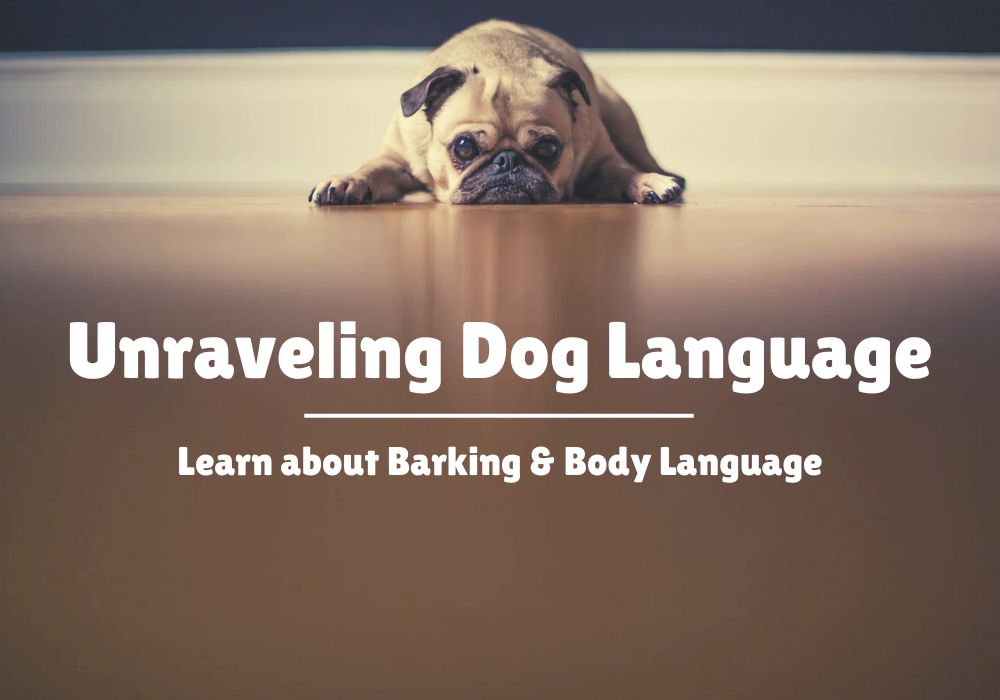Dogs are incredibly expressive animals. Through a combination of vocalizations, body language, and facial expressions, they communicate their needs, desires, and emotions. Understanding these signals can help you form a stronger bond with your furry friend and ensure their well-being. This article will delve into the various ways dogs communicate and what those signals actually mean.
1. The Basics of Dog Communication
- Vocalizations
Dogs use a range of sounds to convey different messages. From barking and growling to whining and howling, each sound can have multiple meanings depending on the context and the dog’s individual personality.
- Body Language
A dog’s body language is a vital component of their communication toolkit. Everything from the position of their tail to the way they hold their ears can provide insights into their emotional state and intentions.
- Facial Expressions
While dogs do not have the same range of facial expressions as humans, they do use their eyes, mouth, and ears to express a variety of emotions. Paying attention to these subtle cues can help you better understand what your dog is feeling.
2. Understanding Common Dog Sounds
- Barking
Barking is the most common form of vocal communication in dogs. It can indicate excitement, alertness, fear, or a desire for attention. For instance:
- Excited Barking: Short, high-pitched barks often accompanied by wagging tails and jumping.
- Alert Barking: Rapid, continuous barks that may signify that the dog senses a potential threat or intruder.
- Attention-Seeking Barking: Repetitive barks that occur when the dog wants something, such as food, play, or a walk.
- Growling
Growling is often misunderstood as solely a sign of aggression. However, it can also indicate discomfort, fear, or a desire to be left alone. It’s important to assess the context and the dog’s overall body language to accurately interpret a growl.
- Whining
Whining usually indicates that a dog is anxious, excited, or in pain. Puppies often whine to get attention from their mothers or humans. Adult dogs may whine when they are stressed or trying to communicate a need.
- Howling
Howling is a form of long-distance communication that dogs inherited from their wolf ancestors. It can signify loneliness, attract attention, or respond to certain sounds like sirens.
3. Decoding Dog Body Language
- Tail Positions
A dog’s tail is a significant indicator of their emotional state.
- Wagging Tail: Generally, a wagging tail indicates happiness or excitement, but the speed and direction of the wag can provide additional context. A slow wag can suggest uncertainty, while a fast wag often means excitement.
- Tail Between Legs: This position usually signifies fear or submission.
- Raised, Stiff Tail: A raised, stiff tail can indicate alertness or aggression.
- Ear Positions
A dog’s ears can tell you a lot about their mood.
- Erect Ears: Erect ears usually mean the dog is alert and attentive.
- Flattened Ears: Flattened ears can indicate fear or submission.
- Relaxed Ears: Ears in a natural, relaxed position generally mean the dog is calm.
- Overall Posture
A dog’s posture can reveal their emotional state and intentions.
- Relaxed Posture: A dog with a loose, relaxed body and wagging tail is usually content and approachable.
- Tense, Stiff Posture: A tense body with hackles raised can indicate aggression or fear.
- Play Bow: A play bow, where the front legs are stretched out and the rear is up, is a universal sign that the dog wants to play.
4. Facial Expressions and What They Mean
- Eye Contact
Dogs use their eyes to communicate emotions and intentions.
- Direct Stare: A direct stare can be a sign of dominance or aggression.
- Soft Eyes: Soft, relaxed eyes often indicate a calm, content dog.
- Averted Gaze: An averted gaze usually signifies submission or a desire to avoid confrontation.
- Mouth Movements
The way a dog holds their mouth can also provide clues about their mood.
- Relaxed Mouth: A slightly open mouth with a relaxed tongue is a sign of a happy dog.
- Closed Mouth: A closed mouth can indicate that the dog is focused or tense.
- Lips Pulled Back: Lips pulled back, showing teeth, can be a sign of aggression or fear.
- Brow and Forehead Movements
Dogs use their brow and forehead muscles to express different emotions.
- Raised Brows: Raised brows can indicate curiosity or interest.
- Furrowed Brow: A furrowed brow may suggest confusion or concern.
5. The Role of Context in Dog Communication
Understanding dog communication requires paying attention to the context in which behaviors occur. A single behavior can have multiple meanings depending on the situation. For instance, a dog may bark both when they are excited to see their owner and when they sense an intruder. Observing the overall environment and other accompanying signals is essential for accurate interpretation.
Conclusion
Decoding what your dog is saying involves understanding their vocalizations, body language, and facial expressions. By paying attention to these cues and considering the context, you can better understand your dog’s needs and emotions. This knowledge will not only help you respond appropriately but also strengthen the bond between you and your furry companion.
Must read
How On Demand Doctors Can Help Patients Recover Faster?
FAQs
Continuous barking can indicate excitement, alertness to a potential threat, or a desire for attention. Assessing the context and accompanying body language can help determine the exact reason.
A happy dog usually has a relaxed body, wagging tail, and open mouth. A stressed dog may have a tense body, flattened ears, and may whine or growl.
Growling when approached while eating can indicate resource guarding. It’s a way for the dog to communicate that they feel threatened and want to protect their food.
A relaxed dog typically has a loose body posture, wagging tail, relaxed ears, and a slightly open mouth.

